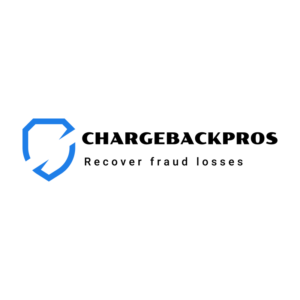Posting a security guard outside your store to check IDs and search bags might be an effective way to keep your merchandise safe, but it can also alienate your good and loyal customers. Some of the most effective methods of online fraud protection have the same effect. Multi-factor authentication and other strict cybersecurity protocols can cause a lot of checkout friction for ordinary shoppers, and when it gets to be too much for them, they just might abandon their carts and shop elsewhere. How can merchants balance checkout friction against the ever-increasing need to protect themselves from e-commerce fraud?
- What is the Relationship between Friction and Fraud Protection?
- What are The Most Common Points of Friction?
- How Can Merchants Minimize Friction Without Sacrificing Fraud Protection?
- Conclusion
For all that fraud can directly harm merchants, the number one concern merchants have about fraud is the way it impacts the customer experience. This was reported in a study that shows that more than half of e-commerce merchants say they prioritize anti-fraud protections over the customer experience. Merchants understand that they can’t afford to ignore fraud and chargebacks, but they also know that driving away their own customers alongside the fraudsters is no victory.
The cost of friction is not theoretical. Consumers increasingly want fast, convenient purchasing experiences that don’t slow them down with identity-verification checks or other security hurdles that feel, from their perspective, unnecessary or even intrusive. One out of three consumers has given up on an account registration process that became too lengthy or complicated, leaving merchants in a difficult position of balancing necessary protections against the shopping experience their customers want and expect.
Getting the balance right doesn’t have to be an impossible task. Smart solutions and best practices can help you implement protections where they’re needed without causing a negative experience for the customer.
What is the Relationship between Friction and Fraud Protection?
The best way to stop online fraudsters is to challenge them to prove their identities before they can complete a purchase, and remove shortcuts that allow them to make purchases unchallenged. When regular customers encounter these safeguards, it disrupts their shopping experience and causes friction.
The best way to stop online fraudsters is to challenge them to prove their identities before they can complete a purchase, and remove shortcuts that allow them to make purchases unchallenged. When regular customers encounter these safeguards, it disrupts their shopping experience and causes friction.
Online fraud is based on making purchases on somebody else’s payment instrument, without their knowledge or authorization. This can be done either by using a stolen payment card directly, or by gaining access to a customer account with stored funds or payment credentials. By making the purchaser verify that they are the same person as the cardholder or account holder, merchants can interdict all but the most sophisticated fraud attacks.
The problem is that real customers know they aren’t fraudsters, and they can resent being treated like potential suspects—especially when a security feature interrupts or delays their purchase. While consumers do understand the need for anti-fraud protections, everybody has their limits. Excessive, redundant, or slow verification processes can cause even the most determined shoppers to close their browser tab and look for an easier alternative.
What are The Most Common Points of Friction?
There are various points in the customer journey that are particularly vulnerable to exploitation by fraudsters. Merchants often implement added security measures at these points, causing customers to experience friction.
There are various points in the customer journey that are particularly vulnerable to exploitation by fraudsters. Merchants often implement added security measures at these points, causing customers to experience friction:
- During the account creation process, where fraudsters can register a phony customer identity in order to use a stolen credit card. Friction is caused by merchants asking for lots of personal data or making customers go through a long series of identity verification steps.
- When logging in. Passwords alone are not enough to stop many fraudsters, so merchants may implement strong password requirements or multi-factor authentication protocols. These are effective at preventing account takeover attacks, but frequent customers may find them tedious.
- Checkout time is a critical moment, and many merchants opt to use anti-fraud filters that block suspicious transactions from going through. These programs often generate false positives, rejecting orders from legitimate customers (and frustrating the heck out of them). Authentication protocols like 3-D Secure are less likely to reject valid orders, but add additional steps to the checkout process.
Fraud concerns can also negatively impact the customer experience by making merchants less likely to use promotional offers, reward programs, one-click checkout, and other features that are appreciated by customers but vulnerable to fraud.
How Can Merchants Minimize Friction Without Sacrificing Fraud Protection?
By taking a dynamic, strategic approach, merchants can implement the fraud protections they need without causing excessive friction for their best customers. This may require the use of smart software solutions that can decide when certain security measures are needed.
By taking a dynamic, strategic approach, merchants can implement the fraud protections they need without causing excessive friction for their best customers. This may require the use of smart software solutions that can decide when certain security measures are needed.
The current generation of anti-fraud tools can use artificial intelligence and machine learning to assess the risk of any given transaction. Those that fall within a gray area—suspicious but not obviously fraud—can be subjected to additional security measures, such as identity re-verification.
Trusted accounts, on the other hand, can be waved through for a seamless, friction-free checkout experience.
In combination with other factors, data points such as device ID can be given a high degree of trust, allowing merchants to quickly identify real, returning customers. By the same token, customers from high-risk IP blocks or geolocations can be subjected to additional security checks or manual review processes as needed.
Customers who experience appropriate and well-timed security checks will experience then as “positive friction,” indicators that you’re being safe with their data and taking reasonable steps to prevent fraud. Instead of pushing them away, this can actually strengthen their trust and loyalty.
Conclusion
Merchants can feel like they’re stuck between a rock and a hard place when it comes to fraud prevention and the customer experience. Instead of thinking that all friction is a bad thing, try to remember that the goal isn’t to avoid all friction, but to create positive friction: targeted, effective security measures that kick in at the right moment.
Of course, trying to figure out where to draw the line between positive friction and excessive security is one of the things that makes this balancing act so challenging. It’s good idea for merchants to analyze their fraud data and consult with their security partners to identify their most vulnerable areas and come up with a customized fraud prevention plan that covers all the bases.











